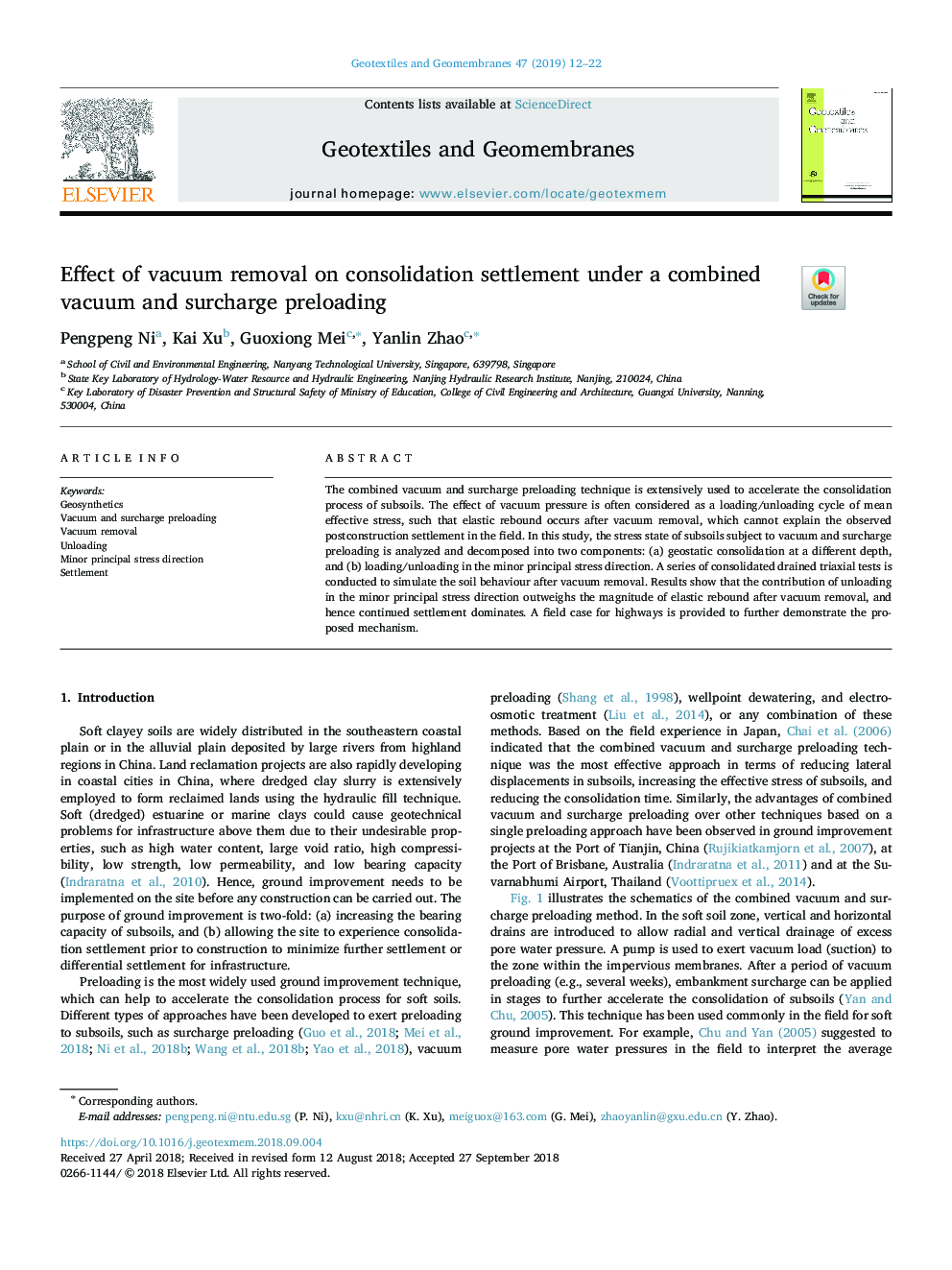| Article ID | Journal | Published Year | Pages | File Type |
|---|---|---|---|---|
| 11024212 | Geotextiles and Geomembranes | 2019 | 11 Pages |
Abstract
The combined vacuum and surcharge preloading technique is extensively used to accelerate the consolidation process of subsoils. The effect of vacuum pressure is often considered as a loading/unloading cycle of mean effective stress, such that elastic rebound occurs after vacuum removal, which cannot explain the observed postconstruction settlement in the field. In this study, the stress state of subsoils subject to vacuum and surcharge preloading is analyzed and decomposed into two components: (a) geostatic consolidation at a different depth, and (b) loading/unloading in the minor principal stress direction. A series of consolidated drained triaxial tests is conducted to simulate the soil behaviour after vacuum removal. Results show that the contribution of unloading in the minor principal stress direction outweighs the magnitude of elastic rebound after vacuum removal, and hence continued settlement dominates. A field case for highways is provided to further demonstrate the proposed mechanism.
Keywords
Related Topics
Physical Sciences and Engineering
Earth and Planetary Sciences
Geotechnical Engineering and Engineering Geology
Authors
Pengpeng Ni, Kai Xu, Guoxiong Mei, Yanlin Zhao,
